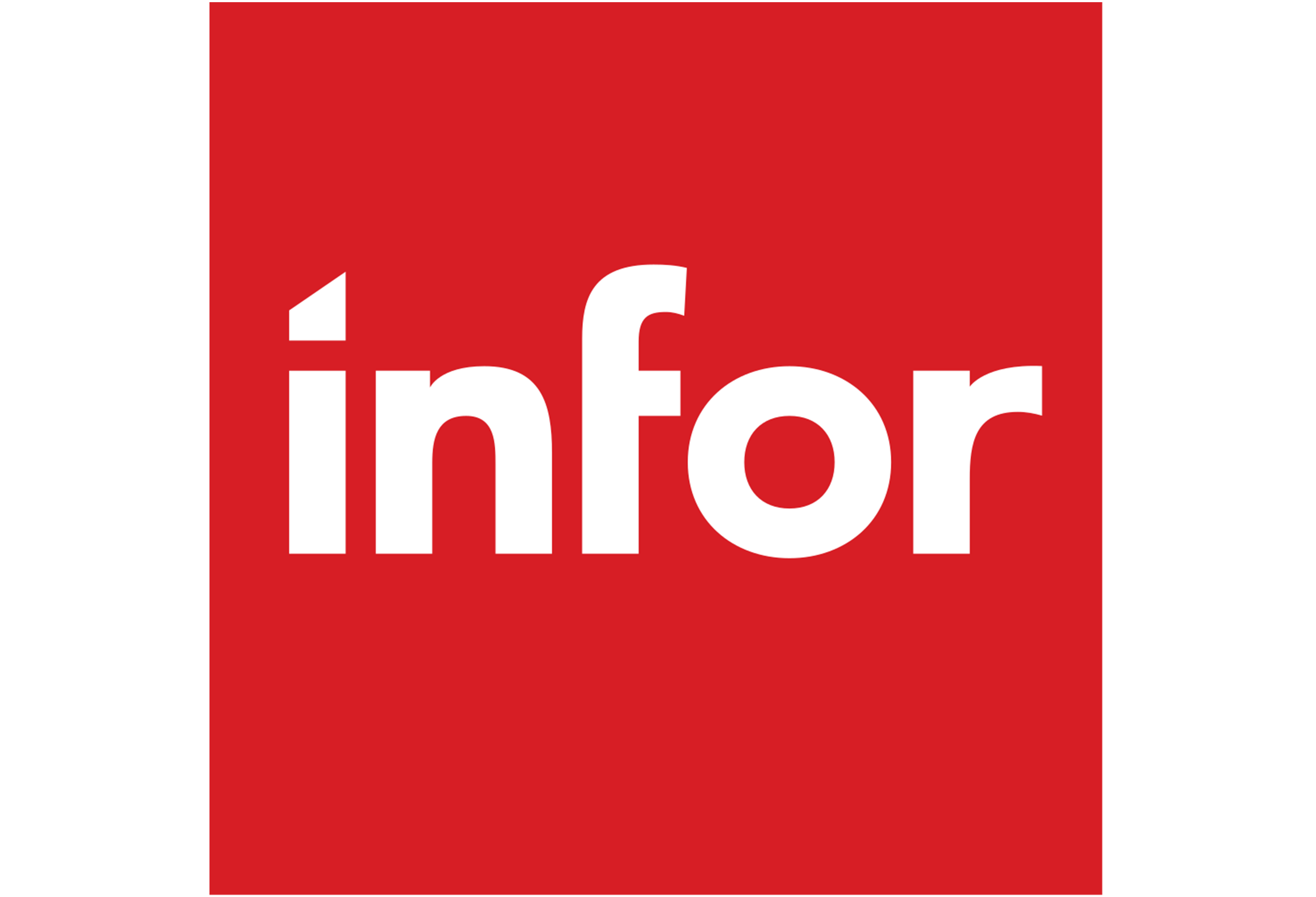
by Fabio Tiviti, Vice President, ASEAN, Infor
Why IoT, ML, traceability and transparency are set to reign in 2021
The unforeseen disruption experienced in 2020 has prompted food and beverage producers to future proof their businesses as far as is possible. While uncertainty seems set to continue for some time, through focusing on expediting time to market; food quality and safety; supply chain resilience; and the creation of omni-channel models, companies are putting themselves in the strongest position they can in order to embrace and capitalise on future opportunities.
Operational excellence is driving successful outcomes across many of these initiatives, as firms look to optimise resource efficiency, whether that’s people, energy, water or all of the above. In agriculture for example, precision will become imperative. New technologies such as IoT will therefore become crucial in facilitating the granularity required to minimise waste while maximising output. (Agriculture sector: Preparing for disruption in the food value chain,” McKinsey Quarterly, 2020).
So, with this in mind, what does the future look like for food producers
Prediction 1: Cloud
There’s little doubt that cloud is set for huge growth as a means of creating robustness and agility. Frankly, there is no other way when you look at what the business is asking for. It’s crucial in fully capturing data from IoT devices and the extended supply chain. There’s little point in having temperature readings in a structured ERP database that sits safely within the company’s firewalls. That’s why we have a data lake in the cloud and use AI services and computing power in the cloud to provide intelligence and make the data meaningful. This goes way beyond installing a piece of software. What is smart today will be outsmarted tomorrow with even more clever logic.
A big advantage of cloud is having this kind of technology at hand as a service instead of having to do a lengthy IT project to implement something that will not scale. Cloud also represents an opportunity to implement changes faster opposed to having to do technical migration projects which often require teams to take a step backwards before being able to move forwards.
Many of our leading customers have already moved to the cloud or have stipulated their journey to the cloud. I believe that 2021 will see many more food firms go to the cloud as they seek to drive operational excellence and genuinely future proof their businesses in what looks set to be an uncertain few years ahead.
Prediction 2: Omni-channel
Food producing companies have seen a huge shift in demand, with home deliveries taking precedence over restaurants and supermarkets. This trend is unlikely to snap back to pre-pandemic levels as consumers have simply become now more used to ordering their food on the internet. Being omni-channel makes the business less vulnerable and able to take a larger piece of the market. We will definitely see many food producers becoming omni-channel in 2021 by implementing ecommerce, either being a webshop or connecting to a digital marketplace like Amazon.
Another important shift is brand awareness. The brand is more powerful if a relationship exists directly with the consumer, not via the retailer. Today consumers are not calling the customer service number on the packaging when they have a question. The new generation is impatient and they want to place orders, and have questions answered at the time that suits them, even when it’s in the middle of the night. An example of how this is being addressed is via chatbots which can provide ingredients information or food preparation recommendations to the consumer. This also provides a lot of data about how the food is being used and appreciated by the consumers, which can drive product innovation.
Prediction 3: Industry 4.0 tech
Despite the need to become more efficient and reduce food, water and energy waste, only 6% of food processors claim using IoT, with a further 12% stating plans to explore its role within the next two years. A staggering 82% have no plans whatsoever.
These findings could be explained by the fact that until now, we have seen some experiments in isolated domains, such as image recognition in inspection equipment, IoT devices in farming or in production lines. Yet there appear to be few examples of IoT being used widely to drive operations. For example, production machines have sensors to capture a lot of data like temperatures and other quality parameters, but all data remains in the machine and is lost and meaningless after the production run.
Product recalls are one of the greatest financial risks food and beverage companies face. The recall process in the food manufacturing industry is a highly expensive one, averaging more than $10 million in costs to cover activities such as communicating the recall across the supply chain, retrieving and handling the recalled product, investigating the event, and implementing corrective actions to prevent reoccurrence. (Michael Koeris, Ph.D., “The True Costs You Endure During a Food Recall,” Food Safety Tech, September 4, 2018).
Yet research shows that no firms claim to be completely digital for track and trace and quality management, with only 7% saying they are “largely” ready. Half (50%) say they are not digital yet, while 43% describe their status in this field as “limited”.
This highlights even more that a lot of data resides in unconnected systems such as spreadsheets, disparate quality systems, supplier systems, and IoT devices within isolated applications.
The good news is that in 2021 more food producers will have paved the way by having a digital platform in place in order to capture data and connect this to the transactions in their ERP system.
Prediction 4: Data driven
A digital platform makes it possible to use IoT in a more holistic way. The first benefit of this is that faster and more targeted recalls will be possible, with the ability to identify and analyse the root cause of the issue immediately. The second is that data can be used to drive decisions and create a smarter company. A good example is having insight into the inbound overseas shipments of crops, not only with regards to their estimated time of arrival, but also the storage conditions during transportation so that quality and use before dates can be predicted more accurately. This extends the control of the supply chain outside of the four walls of the factory, and uses data from farm to fork to increase quality and productivity, reduce food waste and minimize food safety risks. In turn, this can turn challenges into a competitive advantage.
Other applications are using image recognition and machine learning (ML) to dynamically determine the quality of received ingredients and using that to determine the purchase price. A customer of ours is already using image recognition and ML to determine fat and muscle grades of carcasses, which sets the price for the farmer.
Something which would have a big impact on food safety would be the use of IoT sensors to check whether equipment is clean, with the results triggering a cleaning order to avoid contamination risks, which brings us on to the next big trend 2021 is likely to see.
Prediction 5: Transparency to the consumer
One such advantage is transparency. Consumers are increasingly seeking more in-depth information about products to help drive their purchasing decisions, with 67% of consumers stating that they want to know everything that goes into the food they buy. 46% of Americans say that claims on food products have a direct influence on their purchase decisions.
In response to this, 23% are planning to provide origin and other product information via a digital platform to the consumer in the next two years, with 15% claiming to already have one in use.
For the remaining 62%, it’s important to demonstrate the efforts being generated into sustainability credentials to consumers. We are seeing a growing number of retailers putting pressure on producers to provide information, with Tesco for instance, asking for food waste reports from the supply chain, and Aldi introducing its Aldi Transparency Code to restore trust in food categories such as meat which mandates that meat processors have to provide origin information to Aldi, so that the consumer can see which farm the meat is sourced from.
In 2020 we saw also GS1 Digital Link, Walmart and Carrefour piloting with IBM Food Trust for some food categories and GlobalGAP GGN opening up to consumers. In 2021 and beyond we will see that this will be expanded to more product categories and used as a way to differentiate producers and prove the sustainability of the supply chain. This means extended control of the supply chain from farm to fork and identifying whether the crop is really GMO-free, what kind of crop protection has been applied, and other factors.

บทความโดย นายฟาบิโอ ทิวิติ รองประธานบริษัท อินฟอร์ อาเชียน
ทำไมอินเทอร์เน็ตออฟธิงค์ (IoT), แมชชีนเลิร์นนิ่ง (ML), การตรวจสอบย้อนกลับและความโปร่งใส จึงมีบทบาทมากในปี 2564
ประสบการณ์จากความยุ่งเหยิงและการชะงักงันที่ไม่มีใครคาดคิดมาก่อนในปี 2563 เป็นบททดสอบให้กับผู้ผลิตอาหารและเครื่องดื่มได้พิสูจน์ว่าจะสามารถรับมือและนำพาธุรกิจของตนให้อยู่รอดและเติบโตในอนาคตได้มากน้อยเพียงใด ในขณะที่ความไม่แน่นอนดูเหมือนจะยังคงอยู่กับเราต่อไปอีกระยะหนึ่ง บริษัทต่าง ๆ ก็กำลังพยายามพาตัวเองให้ยืนหยัดอยู่ในจุดที่แข็งแกร่งที่สุดเท่าที่จะทำได้ผ่านแนวทางต่าง ๆ เช่น ให้ความสำคัญกับการกระตุ้นการส่งสินค้าและบริการสู่ตลาดให้เร็วขึ้น, คุณภาพและความปลอดภัยของอาหาร, ความคล่องตัวของระบบซัพพลายเชน และการสร้างออมนิ-แชนแนลโมเดล (omni-channel) ต่าง ๆ เพื่อให้ตอบรับและใช้ประโยชน์จากโอกาสต่าง ๆ ที่จะมีมาในอนาคต
ความเป็นเลิศในการปฏิบัติงานเป็นสิ่งผลักดันให้ความคิดสร้างสรรค์ดังกล่าวข้างต้นหลายรายการประสบความสำเร็จ เพราะบริษัทต่าง ๆ ล้วนต้องการใช้ทรัพยากรให้เกิดประโยชน์สูงสุด ไม่ว่าจะเป็นกำลังคน การใช้พลังงาน การใช้น้ำ หรือทั้งหมดที่กล่าวมา ตัวอย่างเช่น ความเที่ยงตรงแม่นยำเป็นสิ่งที่หลีกเลี่ยงไม่ได้สำหรับภาคการเกษตร เทคโนโลยีใหม่ ๆ เช่น อินเทอร์เน็ตออฟธิงค์ (IoT) ถูกนำมาใช้และมีความสำคัญมากในการเก็บรายละเอียดต่าง ๆ ที่จำเป็นต้องใช้เพื่อลดการสูญเปล่าให้เหลือน้อยที่สุดและเพิ่มผลผลิตให้มากที่สุดได้ง่ายและมีประสิทธิภาพ (ที่มา: Agriculture sector: Preparing for disruption in the food value chain,” McKinsey Quarterly, 2020)
จากข้อมูลดังกล่าว อินฟอร์ได้คาดการณ์การเปลี่ยนแปลงของผู้ผลิตอาหารไว้ดังนี้
คาดการณ์เรื่องที่ 1: คลาวด์
มีความคลางแคลงใจเล็กน้อยว่าคลาวด์จะเติบโตอย่างมากในฐานะเป็นเครื่องมือในการสร้างความ แข็งแกร่งและความคล่องตัวอย่างหนึ่งจริงหรือ ซึ่งเมื่อพิจารณาถึงสิ่งที่ธุรกิจต้องการ ก็จะเห็นได้ชัดว่ามันเป็นเช่นนั้นจริง ๆ การเก็บรวบรวมข้อมูลจากอุปกรณ์ IoT ต่าง ๆ และระบบซัพพลายเชนแบบขยาย (Extended Supply Chain) ให้ได้อย่างครบถ้วนเป็นสิ่งสำคัญมาก เช่น การอ่านอุณหภูมิในฐานข้อมูลที่มีโครงสร้างของระบบการวางแผนทรัพยากรทางธุรกิจขององค์กร (ERP) ก็มีจุดเล็กจุดน้อยที่จัดเก็บอยู่ อย่างปลอดภัยในไฟร์วอลล์ของบริษัท จึงเป็นเหตุผลว่าเราต้องมีดาต้าเลค (Data Lake) บนระบบคลาวด์ และใช้บริการด้านปัญญาประดิษฐ์ (AI) ต่าง ๆ รวมถึงใช้พลังของการประมวลผลบนคลาวด์ เพื่อมอบความชาญฉลาดและทำให้ข้อมูลมีความสำคัญ ซึ่งเป็นสิ่งที่มากกว่าเพียงติดตั้งซอฟต์แวร์ใดซอฟต์แวร์หนึ่ง เพราะสิ่งที่ดูว่าเฉียบคมในวันนี้อาจจะถูกเบียดตกขอบไปด้วยตรรกะที่ฉลาดยิ่งกว่าในวันรุ่งขึ้นก็ได้
คุณประโยชน์ที่ดียิ่งของคลาวด์ คือ การใช้งานในรูปแบบ as a service แทนการทำโปรเจกต์ด้านไอทีที่ยืดเยื้อ เพียงเพื่อให้ทำงานบางประเภทที่จะไม่ต้องปรับขนาดให้สำเร็จ คลาวด์ยังช่วยให้ปรับเปลี่ยนการใช้งานได้เร็วกว่า ซึ่งตรงข้ามกับการที่ต้องทำโปรเจกต์เพื่อโยกย้ายทางเทคนิคต่าง ๆ ซึ่งมักต้องการใช้ทีมงานหลายทีมเพื่อทำงานย้อนกลับที่ละขั้นตอนก่อนที่จะสามารถดำเนินการต่อไปได้
ลูกค้าสำคัญหลายรายของอินฟอร์ได้ย้ายไปใช้คลาวด์ หรือวางแนวทางการใช้คลาวด์ไว้แล้ว อินฟอร์เชื่อว่าในปี 2564 เราจะได้เห็นบริษัทด้านอาหารจำนวนมากขึ้นเปลี่ยนไปใช้คลาวด์ เพราะพวกเขาต้องการเครื่องมือขับเคลื่อนการดำเนินงานให้เป็นเลิศและรองรับการเปลี่ยนแปลงในอนาคตที่จะกระทบต่อธุรกิจของตนได้อย่างแท้จริง ไม่ว่าจะเกิดความไม่แน่นอนใดขึ้นในอีกสองสามปีต่อจากนี้
คาดการณ์เรื่องที่ 2: Omni-channel
บริษัทผู้ผลิตอาหารได้เห็นแล้วว่าความต้องการมีการเปลี่ยนแปลงสูงมาก จากการที่บริการส่งสินค้าถึงบ้านเข้ามามีความสำคัญมากกว่าการรับประทานที่ร้านและไปซื้อที่ซุปเปอร์มาร์เก็ตด้วยตนเอง แนวโน้มนี้คงจะไม่กลับไปเป็นเหมือนก่อนการระบาดของโควิด-19 อีกต่อไป เพราะทุกวันนี้ผู้บริโภคคุ้นเคยกับการสั่งอาหารผ่านทางอินเทอร์เน็ตมากขึ้นเสียแล้ว ดังนั้น ช่องทางการขายแบบ Omni-channel จะช่วยลดความเสี่ยงและช่วยให้ธุรกิจสามารถมีส่วนแบ่งในตลาดมากขึ้น ผู้ผลิตอาหารจำนวนมากจะใช้ช่องทางการขายแบบ Omni-channel ในปี 2564 อย่างแน่นอน ผ่านอีคอมเมิร์ซ ไม่ว่าจะเป็นเว็บช็อป (Webshop) หรือเชื่อมต่อไปยังตลาดดิจิทัลเช่น Amazon เป็นต้น
การเปลี่ยนแปลงสำคัญอีกประการหนึ่ง คือ การรับรู้ต่อแบรนด์ของลูกค้ากลุ่มเป้าหมาย แบรนด์จะมีอิทธิพลมากขึ้นหากมีการสร้างความสัมพันธ์ตรงไปยังผู้บริโภคโดยไม่ผ่านผู้ค้าปลีก เมื่อมีคำถามใด ๆ เกิดขึ้นผู้บริโภคในปัจจุบันจะไม่โทรศัพท์ไปที่ฝ่ายบริการลูกค้าตามหมายเลขที่ระบุอยู่บนบรรจุภัณฑ์ คนรุ่นใหม่ไม่อดทนรอ และต้องการสั่งซื้อและได้รับคำตอบต่อคำถามในเวลาที่พวกเขาสะดวกแม้จะเป็นเวลาดึกดื่นแล้วก็ตาม ตัวอย่างของการแก้ปัญหานี้คือการให้บริการผ่านแชทบอท ซึ่งสามารถให้ข้อมูลส่วนผสมของอาหาร หรือคำแนะนำในการจัดเตรียมอาหารต่าง ๆ ให้ผู้บริโภคได้ และยังให้ข้อมูลจำนวนมากเกี่ยวกับวิธีการที่ผู้บริโภคนำอาหารไปใช้และมีความประทับใจอย่างไร ซึ่งสามารถใช้เป็นตัวขับเคลื่อนนวัตกรรมของผลิตภัณฑ์ได้
คาดการณ์เรื่องที่ 3: เทคโนโลยีสำหรับอุตสาหกรรม 4.0
แม้ว่าจะมีความต้องการเพิ่มประสิทธิภาพและลดการสูญเปล่าของอาหาร น้ำ และพลังงาน แต่มีเพียง 6% ของผู้แปรรูปอาหารเท่านั้นที่ใช้ IoT โดยอีก 12% ระบุว่ามีแผนที่จะศึกษาบทบาทของ IoT ภายในสองปีข้างหน้า และ 82% ยังไม่มีแผนใด ๆ เลย
ตัวเลขเหล่านี้อธิบายได้จากข้อเท็จจริงว่า จนถึงปัจจุบันเราได้เห็นการทดลองบางอย่างในโดเมนที่แยกเป็นโซน (Isolated Domains) เช่น การจดจำภาพในอุปกรณ์สำหรับการตรวจสอบ, อุปกรณ์ IoT ในการเพาะปลูก หรือในสายการผลิตต่าง ๆ เป็นต้น ตัวอย่างสองสามตัวอย่างที่แสดงให้เห็นว่ามีการใช้ IoT ในวงกว้างเพื่อขับเคลื่อนการทำงาน เช่น เครื่องจักรที่ใช้ในการผลิตต่าง ๆ มีเซ็นเซอร์เพื่อเก็บข้อมูลจำนวนมาก เช่น อุณหภูมิและตัวแปรด้านคุณภาพอื่น ๆ แต่ข้อมูลทั้งหมดยังคงอยู่ในเครื่องจักรและสูญหายไปหลังจากเริ่มดำเนินการผลิตโดยไม่ได้มีการนำไปใช้ต่อให้เป็นประโยชน์
การเรียกคืนผลิตภัณฑ์เป็นหนึ่งในความเสี่ยงด้านการเงินที่ใหญ่ที่สุดที่บริษัทด้านอาหารและเครื่องดื่มเผชิญอยู่ กระบวนการเรียกคืนในอุตสาหกรรมผลิตอาหารเป็นกระบวนการที่มีค่าใช้จ่ายสูง โดยเฉลี่ยมีค่าใช้จ่ายมากกว่า 10 ล้านเหรียญสหรัฐฯ จึงจะครอบคลุมกิจกรรมต่าง ๆ ในการเรียกคืน เช่น การสื่อสารในการเรียกคืนผลิตภัณฑ์กับผู้ที่เกี่ยวข้องในระบบซัพพลายเชนทั้งหมด, การเรียกคืนและการจัดการกับผลิตภัณฑ์ที่เรียกคืนมา, การตรวจสอบเรื่องราวและการทำการแก้ไขเพื่อไม่ให้เกิดเหตุการณ์แบบเดียวกันขึ้นอีก (Michael Koeris, Ph.D., “The True Costs You Endure During a Food Recall,” Food Safety Tech, September 4, 2018).
การศึกษายังชี้ให้เห็นว่าไม่มีบริษัทใดอ้างว่าระบบการติดตามตรวจสอบและการบริหารจัดการด้านคุณภาพของตนเป็นดิจิทัลอย่างเต็มรูปแบบ มีเพียง 7% ที่กล่าวว่า “ส่วนใหญ่” มีความพร้อม และครึ่งหนึ่ง (50%) กล่าวว่ายังไม่ใช้ระบบดิจิทัล ในขณะที่ 43% อธิบายสถานะของตนว่าใช้ดิจิทัลอย่างมีขอบเขต “จำกัด”
ผลสำรวจเหล่านี้เน้นให้เห็นมากขึ้นว่าข้อมูลจำนวนมากถูกเก็บอยู่ในระบบต่าง ๆ ที่ไม่เชื่อมโยงกัน เช่น สเปรดชีต, ระบบควบคุมคุณภาพหลายระบบ และระบบซัพพลายเออร์หลายระบบที่แตกต่างกัน รวมถึงอุปกรณ์ IoT ต่าง ๆ ที่ทำงานอยู่ในแอปพลิเคชั่นที่ทำงานแยกจากกัน
ในปี 2564 ผู้ผลิตอาหารมากรายจะมีเส้นทางเดินสู่การนำระบบดิจิทัลมาใช้ ด้วยการใช้ดิจิทัลแพลตฟอร์มเพื่อเก็บข้อมูลและเชื่อมต่อข้อมูลไปยังธุรกรรมต่าง ๆ ในระบบ ERP ของตน
คาดการณ์เรื่องที่ 4: ใช้ข้อมูลเป็นตัวขับเคลื่อนธุรกิจ
ดิจิทัลแพลตฟอร์มช่วยให้การใช้ IoT ในลักษณะที่เป็นองค์รวมเป็นไปได้ ประโยชน์ประการแรก คือ สามารถเรียกคืนผลิตภัณฑ์ได้เร็วขึ้นและตรงเป้าหมายมากขึ้น ด้วยความสามารถในการระบุและวิเคราะห์สาเหตุของปัญหาได้ทันที ประโยชน์ประการที่สองคือสามารถนำข้อมูลนั้นไปใช้ขับเคลื่อนการตัดสินใจต่าง ๆ และสร้างบริษัทที่มีความสามารถมากขึ้น ตัวอย่างที่ดีคือการมีข้อมูลเชิงลึกเกี่ยวกับการขนส่งพืชผลจากต่างประเทศ ซึ่งไม่เพียงแต่เกี่ยวเนื่องกับเวลาที่จะมาถึงโดยประมาณเท่านั้น แต่ยังเกี่ยวกับสภาพการเก็บรักษาพืชผลเหล่านั้นระหว่างการขนส่งด้วย เพื่อให้สามารถคาดการณ์คุณภาพและการนำไปใช้ก่อนเวลาหมดอายุได้อย่างแม่นยำมากขึ้น ความสามารถนี้จะช่วยให้สามารถควบคุมระบบซัพพลายเชนที่อยู่นอกส่วนของโรงงานได้และนำข้อมูลจากพื้นที่เพาะปลูกไปจนถึงเมื่ออยู่ในมือของผู้บริโภคไปใช้เพื่อเพิ่มคุณภาพและผลผลิต, ลดการสูญเปล่าของอาหาร และลดความเสี่ยงด้านความปลอดภัยของอาหารให้เหลือน้อยที่สุด และยังสามารถเปลี่ยนความท้าทายต่าง ๆ ให้กลายเป็นความได้เปรียบทางการแข่งขันได้อีกด้วย
แอปพลิเคชั่นอื่น ๆ มีการใช้ระบบการจดจำภาพและแมชชีนเลิร์นนิ่ง (ML) เพื่อกำหนดคุณภาพของส่วนผสมอาหารที่ได้รับและนำไปใช้เพื่อกำหนดราคาซื้อ ลูกค้าของอินฟอร์รายหนึ่งได้ใช้ระบบการจดจำภาพและ ML เพื่อกำหนดปริมาณไขมันและเกรดของเนื้อสัตว์ และใช้ข้อมูลนั้นกำหนดราคาซื้อขายกับเกษตรกร
นอกจากนี้สิ่งที่จะมีผลอย่างมากต่อความปลอดภัยของอาหารคือการใช้เซ็นเซอร์ IoT ตรวจสอบว่าอุปกรณ์สะอาดหรือไม่ โดยผลลัพธ์ที่ออกมาจะอยู่ในรูปแบบคำสั่งให้ทำความสะอาดเพื่อหลีกเลี่ยงการปนเปื้อนต่าง ๆ ซึ่งจะนำเราก้าวสู่แนวโน้มสำคัญในปี 2564
คาดการณ์เรื่องที่ 5: ความโปร่งใสต่อผู้บริโภค
ข้อได้เปรียบประการหนึ่งคือความโปร่งใส ผู้บริโภคกำลังแสวงหาข้อมูลเชิงลึกเกี่ยวกับผลิตภัณฑ์มากขึ้น เพื่อนำไปช่วยในการตัดสินใจซื้อ ทั้งนี้ 67% ของผู้บริโภคกล่าวว่าพวกเขาต้องการทราบทุกสิ่งทุกอย่างที่อยู่ในอาหารที่ซื้อ 46% ของชาวอเมริกันกล่าวว่า การระบุรายละเอียดในผลิตภัณฑ์อาหารมีอิทธิพลโดยตรงต่อการตัดสินใจซื้อ
เพื่อขานรับต่อความต้องการนี้ ผู้ผลิต 23% กำลังวางแผนที่จะให้ข้อมูลเกี่ยวกับแหล่งที่มาและข้อมูลอื่น ๆ ของผลิตภัณฑ์กับผู้บริโภคผ่านดิจิทัลแพลตฟอร์มในอีกสองปีข้างหน้า ในขณะที่ 15% อ้างว่ามีการใช้งานอยู่แล้ว
สิ่งสำคัญสำหรับผู้ผลิตที่เหลืออีก 62% คือจะต้องแสดงให้เห็นถึงความพยายามที่พวกเขากำลังกระทำอยู่ เพื่อรองรับความยั่งยืนให้กับผู้บริโภค เราได้เห็นแล้วว่าผู้ค้าปลีกที่กำลังกดดันให้ผู้ผลิตให้ข้อมูลผลิตภัณฑ์มีจำนวนมากขึ้น เช่น Tesco ได้ขอรายงานความสูญเปล่าด้านอาหารจากซัพพลายเชน และ Aldi ได้แนะนำ Aldi Transparency Code เพื่อคืนความไว้ใจให้กับอาหารประเภทต่าง ๆ เช่น เนื้อสัตว์ ซึ่งบังคับว่าผู้แปรรูปเนื้อสัตว์ต้องให้ข้อมูลแหล่งที่มากับ Aldi เพื่อให้ผู้บริโภคได้ทราบว่าเนื้อสัตว์นั้น ๆ มีแหล่งที่มาจากฟาร์มปศุสัตว์ใด
ในปี 2563 เราได้เห็น Walmart และ Carrefour เริ่มนำร่องร่วมกับ IBM Food Trust นำ GS1 Digital Link ซึ่งเป็นรหัสสากลที่สามารถสแกนข้อมูลได้ด้วยโทรศัพท์มือถือมาใช้กับอาหารบางประเภท และการเปิดให้ผู้บริโภคได้ใช้ GlobalGAP GGN ซึ่งเป็นหมายเลขสำหรับผลิตภัณฑ์เพื่อตรวจสอบย้อนกลับบรรจุภัณฑ์ขั้นสุดท้าย ในปี 2564 และต่อจากนี้ไป เราจะได้เห็นสิ่งที่กล่าวมานี้ขยายไปใช้งานกับผลิตภัณฑ์หลากหลายประเภทมากขึ้น และใช้เป็นวิธีการสร้างความแตกต่างของผู้ผลิตและพิสูจน์ความยั่งยืนของระบบซัพพลายเชน ซึ่งหมายถึงสามารถขยายการควบคุมระบบซัพพลายเชนตั้งแต่แหล่งกำเนิดไปจนถึงมือผู้บริโภค และแยกแยะว่าพืชนั้น ๆ ปลอด GMO จริงหรือไม่ มีการป้องกันพืชด้วยวิธีการแบบใด และปัจจัยอื่น ๆ ที่เกี่ยวข้อง

